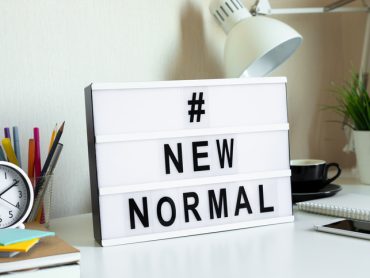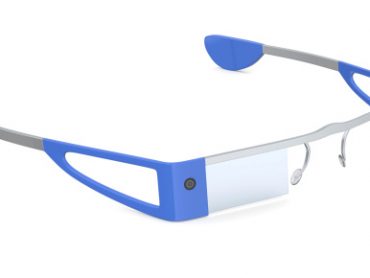Making the Hotel of the Future Yours
For many hoteliers, forecasting the future of our industry typically centers upon financial data prognostications and, for instance, whether RevPAR growth will translate into higher property valuations. Setting aside dollars and cents, however, the future holds many profound changes for hospitality, some of which we are currently at full tilt grappling with while others are still quite nascent.
The good news is that there will always be a real need for temporary lodgings, both for leisure as well as business travel, all of which is coalescing into a hybrid form given the cringe-worthy portmanteau of ‘bleisure’. Given the persisting need to accommodate these two comprehensive drivers, hotels will continue to have restaurants, bars, meeting spaces, fitness centers, spas, lounges, recreational facilities, event halls and, of course, guestrooms.
How the future will evolve all of these various operations is through the application of technology to streamline processes, reduce costs, reveal new revenue opportunities and augment the guest experience through personalization. In order to keep pace with how hospitality and guest expectations are changing, you must have a vision of what a hotel in the future looks like, and then diligently work towards it in a prudent manner.
While any discussion of technological upgrades presupposes that you have mastered the fundamentals of our industry – for example, training your front desk supervisors to remember every guest’s name – the key to making the future yours is to proceed at a steady pace, going operation by operation to see what you can implement. Most critical for this discussion is the guestroom and that is where our focus must be.
As everyone praises the IoT (internet of things) innovations touted by the major chains, ensuring that every device is connected cannot be readily accomplished in one fell swoop due to budget restraints. Instead, you must evaluate all option improvements from the customer’s perspective in terms of what will create the best impression. Foremost on that list is casting, whereby a mobile phone can be synced with the wall-mounted monitor to thereby relay stored preferences as well as control nearly every room function.
The first step here is a thorough investigation of the cost involved to either upgrade your televisions to a smarter model with casting capabilities built-in or buying an external box, knowing full well that both solutions will be obsolete in five years with the latter suffering far sooner than the former. Once you have this synchronization in place, you can then look to incrementally connect a smart thermostat for tremendous energy savings, what is shown on any other electronic displays, the lighting, the blinds, security, room service, concierge, housekeeping requests and any other onsite amenities.
The smart monitors of the near future are thus far more than mere entertainment devices, even though they will continue to perform that core function far better than their current iterations. They will also soon incorporate voice command interfaces similar to today’s Amazon Echo so that every guestroom will have a virtual butler presence to augment the experience. Before this becomes a full-fledged reality, though, you may consider installing a Google Home, Sonos One or any other model of smart speaker in your guestrooms as a bolt-on solution.
In fact, with phone-enabled room keys, the ability to check-in or checkout through the internet and now with a reasonably intelligent virtual concierge, the front desk itself can be put on the chopping block. Rather, what we will start to see are roving guest service agents carrying tablets with PMS-integrated apps to send service requests, greet arrivals with open arms and assist wherever is needed.
Beyond the guestroom and the front desk, all other operations can primarily benefit from heightened personalization. And the most important first step towards reaching some level of this is having an integrated CRM where all past, current and future data is stored in one place to thereby make cross-departmental inferences possible.
Moving away from the onsite experience and into the prearrival or sales funnel, though, the future of the hotel purchase pathway will be dramatically simplified through the application of artificial intelligence.
Based upon guests’ past leisure travel patterns – and coupled with shopping habits, passions outside of work, reviews on social media and online publications frequently read, to cite a few potential data sources – machine learning processes will be able to formulate robust itineraries that include destination, transportation, accommodations and activities, essentially taking the planning (and the planner) out of the equation. For business travel, similar AI algorithms will suggest hotels based upon micro-geographic requirements, airline schedules, loyalty program participation, length of stay criteria and any other trip specifications.
As well, the proliferation of virtual reality will allow potential customers to immerse themselves in the hotel experience prior to booking, and indeed a convincing VR reel will become a key factor towards the sale. Right now, VR is still a novelty, but an investment on this front will nonetheless offer a perspective that no social media image post or camera filter can offer at the moment. While some may argue that this takes the excitement out of the arrival experience, it also ensures that the guest knows exactly what they are purchasing in advance, allowing for exceptional upsell opportunities.
Every way you look, technology will play a role to help you boost revenues as well as increase guest satisfaction. These enhancements will present themselves as both visible installations, like digitally enabled lobby artwork, or invisible software integrations, such as a customer intelligence platform that links behavioral patterns from disparate operations so you can develop meaningful packages. You can’t do it all at once, so the key is constant and steady upgrades, committing your energy to one project at a time to ensure that it’s a success.




